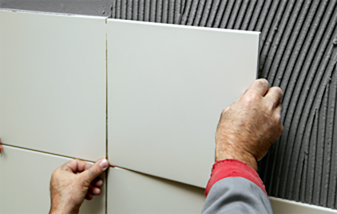
நவ் . 05, 2024 11:33 Back to list
hpmc structure
Understanding HPMC Structure and Its Applications
Hydroxypropyl Methylcellulose (HPMC) is a widely used cellulose derivative that plays a vital role in various industries, particularly in pharmaceuticals, food, and construction. The unique structure of HPMC contributes to its diverse properties and applications, making it a critical component in many formulations.
Chemical Structure of HPMC
HPMC is a modified form of cellulose, which is a natural polymer derived from plant cell walls. The modification involves the substitution of hydroxyl groups in the cellulose structure with hydroxypropyl and methoxy groups. This alteration enhances the solubility of cellulose in water, a property not observable in its parent compound.
The general structural formula of cellulose is represented as (C6H10O5)n, where n indicates the degree of polymerization. In HPMC, hydroxypropyl and methoxy groups are introduced into different positions of the cellulose backbone. The degree of substitution and the molecular weight can vary, leading to HPMC grades with distinct properties. The typical structure can therefore be described as follows
1. Backbone The primary cellulose chain consists of repeating cellobiose units linked by β-1,4-glycosidic bonds. 2. Substituents Hydroxypropyl and methoxy groups attach to the hydroxyl groups on the cellulose ring, which alters the hydrophilicity and viscosity of the resulting polymer.
Physical Properties
The unique structure of HPMC endows it with several significant physical properties, including
1. Solubility HPMC dissolves easily in water, forming viscous solutions that can be tailored according to industrial needs. 2. Thickening Agent It acts as an effective thickening agent, making it valuable in products that require a specific viscosity. 3. Film-Forming Ability HPMC can form flexible, transparent films, which are useful in pharmaceutical coatings and food applications. 4. Stability It exhibits excellent thermal and chemical stability, which is crucial for maintaining the integrity of various formulations.
hpmc structure

Applications of HPMC
Due to its favorable properties, HPMC has found extensive applications across multiple fields
1. Pharmaceuticals In drug formulations, HPMC serves as a binder in tablets, a thickening agent in suspensions, and an agent for controlled-release medications. It ensures uniform distribution of active ingredients and improves the stability and bioavailability of drugs.
2. Food Industry HPMC is used as a food additive, contributing to the texture and consistency of products such as ice cream, baked goods, and sauces. It helps stabilize emulsions and prevent the crystallization of sugars.
3. Construction The construction industry utilizes HPMC as a water-retention agent in cement, mortar, and plaster. It enhances the workability of these materials, ensuring better adhesion and reduced cracking.
4. Personal Care Products In cosmetics and personal care formulations, HPMC is used to thicken creams and lotions, providing desirable textures and enhancing stability.
Conclusion
The structure of Hydroxypropyl Methylcellulose is fundamental to its wide range of properties and applications. As a cellulose derivative, HPMC offers unique characteristics that enable its use in diverse fields, including pharmaceuticals, food technology, construction, and personal care products. Understanding the chemical configuration and the resultant properties of HPMC is essential for innovators looking to harness its potential in different applications. As research continues, we can anticipate even more groundbreaking uses for this versatile compound in the future.
-
Unlocking the Benefits of HPMC Products: A Gateway to Versatile Applications
NewsAug.07,2025
-
Unleashing the Potential of HPMC Ashland: A Comprehensive Look
NewsAug.07,2025
-
Tile Bonding Cellulose: The Key to Superior Adhesion and Durability
NewsAug.07,2025
-
Hydroxypropyl Methylcellulose Powder: The Versatile Component in Modern Pharmaceuticals
NewsAug.07,2025
-
Hydroxyethyl Cellulose: The Versatile Solution for Various Industries
NewsAug.07,2025
-
Hydroxyethyl Cellulose (HEC): The Versatile Polymer for Various Applications
NewsAug.07,2025







